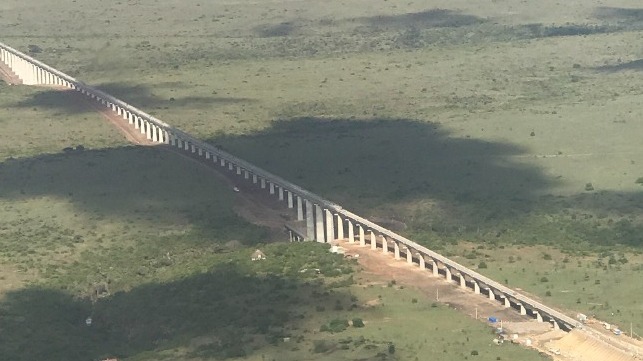China's Expanding Economic Influence in Africa: Risk vs. Reward

The debate on Belt and Road Initiative (BRI) investments in Africa has always teetered between the risks of a “debt trap” and the benefits of industrialization. BRI proponents in Africa believe that the massive debt-financed infrastructural projects will induce growth in GDP in a manner that economists call the Keynesian Multiplier theory. In this view, the Chinese-driven “infrastructure-led growth” will increase governments’ investments in the economy, leading to cycles of economic growth and increased employment. The theory suggests that the GDP of a country will be raised by more than the amount spent in financing infrastructure projects.
This approach has made some African governments to ignore red flags raised in risk assessment studies of these projects that indicate unavailability of economic and social profitability. Most of these infrastructural development projects on average will take between 50 to 75 years to be amortized, and the debt pressure is causing economic challenges in many African nations.
A case in point is the construction of the Standard Gauge Railway between Kenya’s port city of Mombasa and Nairobi which was financed by China’s Exim Bank. Despite the existence of an old metric gauge railway, which could have been renovated and upgraded as a cost-effective approach, the government decided to build a new railway network altogether. The government hoped that with a growing economy, the new railway line would easily repay the money spent. However, an initial analysis at the time of construction showed that double-digit economic growth would be required to make the railway financially viable.
The current economic growth projections by Kenya’s Central Bank stands at 1.3 percent for the year 2020, having accounted for COVID-19 economic impacts. In addition, the railway has not to date been able to cover its operational costs, and thus its revenues cannot service the loan interest - let alone repayment.
The overarching question in this BRI debate and its impact in Africa is whether it really benefits the local countries through industrialization or just serves to entrench China’s economic interests. One of the significant trends that emerge from analyzing the BRI investments in Africa is that out of the 49 African countries that China claims to have an existing MoU (Memorandum of Understanding) or support for the BRI, 34 countries (70 percent) have a coastline with strategic positions to global shipping routes -16 in West Africa, eight each in North and East and two in Southern Africa. The investments are concentrated along the Gulf of Aden through the Suez Canal and the Mediterranean Sea, touching Djibouti Port, Port Sudan and Egypt’s Port Said.
A recent report by Dr.Venkateswaran Lokanathan of Observer Research Foundation unmasks other trends that reveal how China is using infrastructure development to link its industrial and energy projects in hinterland areas with strategic African ports. Take the case of an oil refinery in Northern Sudan, which is located near the route of the proposed Dakar-Port Sudan railway. China has a long history of oil exploration in Sudan, with major refineries affiliated to China National Petroleum Corporation.
Further, the 2018 deal between Tunisia and China to formalize a partnership for BRI would see Tunisia expand its trade and foreign investment, including development of Tunisia’s southern port of Zarzis into an economic and trading hub. In addition, a 90-mile railway would be constructed to link Gabes’ (Tunisia’s industrial city and a hub of petrochemical and phosphate production) to Zarzis port.
These developments have enabled China to gain access to important maritime routes for transport of raw materials like phosphate, oil, iron and coal to mainland China, and later finished goods and Chinese labor back to Africa.
China’s focus in Africa is concentrated on infrastructure development: only about three percent of Chinese projects are in healthcare and education, which have a direct impact to the local population. Such projects are only being undertaken in three countries - Ghana, Seychelles and Comoros.
This year’s annual report from the US-China Economic and Security Review Commission - a study group convened by the U.S. Congress - highlights China’ s expanding military footprint in Africa, which serves to reinforce Chinese influence. In 2017, China established its first naval base in Djibouti, where Beijing holds significant sway due to the country’s indebtedness to China. Additionally, there are 2000 Chinese troops deployed on UN peacekeeping operations, especially in African countries where China has significant economic interests.
The People’s Liberation Army Navy (PLA Navy) has also been conducting regular patrols along the Gulf of Aden, which encompasses trade routes key for exporting oil to China - mainly from Sudan. It has also been reported that te PLA Navy has made initial forays to West Africa’s Coast near Angola- China’s top economic partner in the region.
Brian Gicheru Kinyua is a freelance writer based in Mombasa City, Kenya where he researches and writes on logistics and the African Blue Economy. His primary focus is on shipping and ports development in Sub-Saharan Africa and how it fits into the global maritime order. He also provides consulting services in communications and public relations.
The opinions expressed herein are the author's and not necessarily those of The Maritime Executive.
